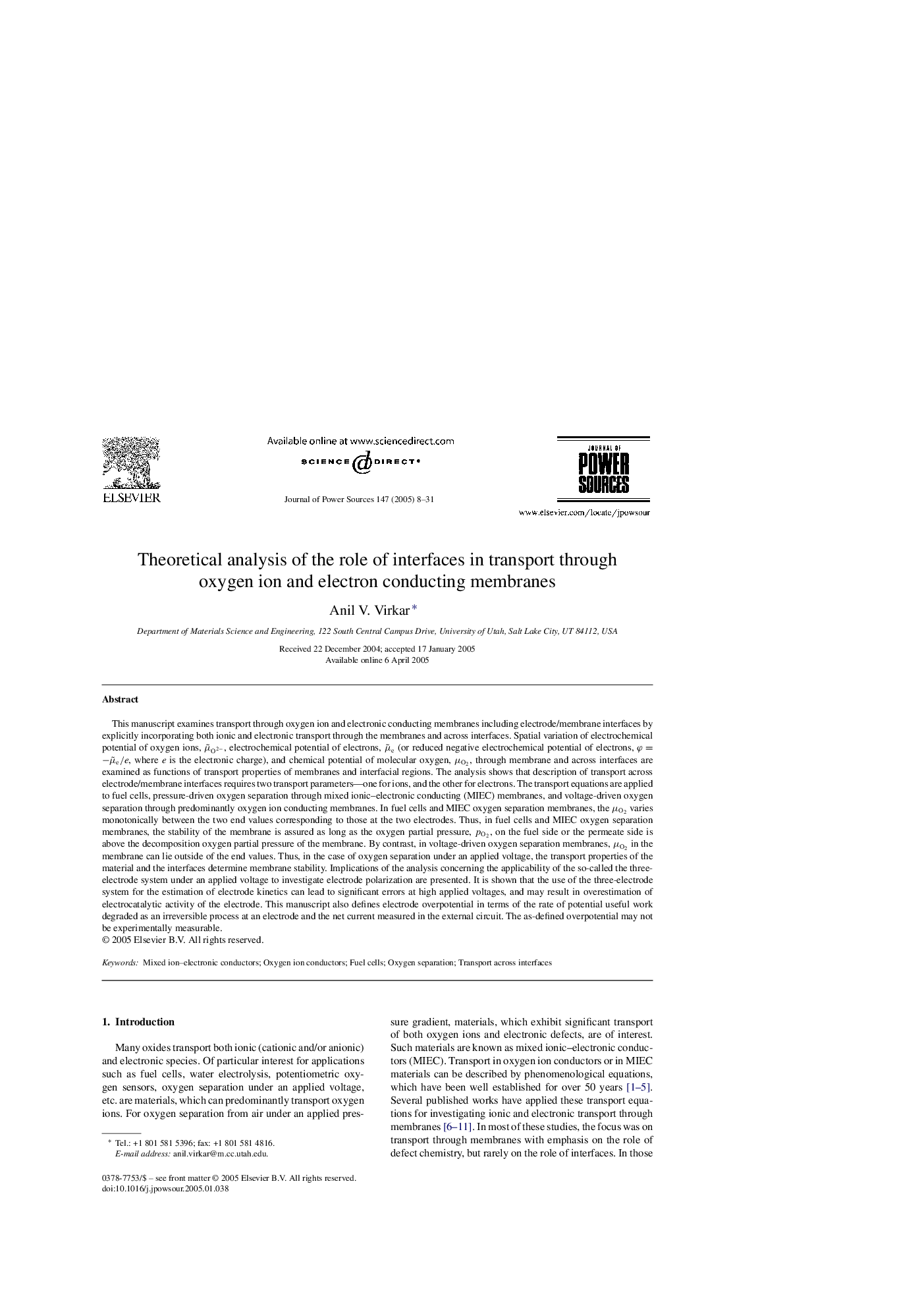| کد مقاله | کد نشریه | سال انتشار | مقاله انگلیسی | نسخه تمام متن |
|---|---|---|---|---|
| 9760238 | 1498045 | 2005 | 24 صفحه PDF | دانلود رایگان |
عنوان انگلیسی مقاله ISI
Theoretical analysis of the role of interfaces in transport through oxygen ion and electron conducting membranes
دانلود مقاله + سفارش ترجمه
دانلود مقاله ISI انگلیسی
رایگان برای ایرانیان
کلمات کلیدی
موضوعات مرتبط
مهندسی و علوم پایه
شیمی
الکتروشیمی
پیش نمایش صفحه اول مقاله

چکیده انگلیسی
This manuscript examines transport through oxygen ion and electronic conducting membranes including electrode/membrane interfaces by explicitly incorporating both ionic and electronic transport through the membranes and across interfaces. Spatial variation of electrochemical potential of oxygen ions, μËO2â, electrochemical potential of electrons, μËe (or reduced negative electrochemical potential of electrons, Ï=âμËe/e, where e is the electronic charge), and chemical potential of molecular oxygen, μO2, through membrane and across interfaces are examined as functions of transport properties of membranes and interfacial regions. The analysis shows that description of transport across electrode/membrane interfaces requires two transport parameters-one for ions, and the other for electrons. The transport equations are applied to fuel cells, pressure-driven oxygen separation through mixed ionic-electronic conducting (MIEC) membranes, and voltage-driven oxygen separation through predominantly oxygen ion conducting membranes. In fuel cells and MIEC oxygen separation membranes, the μO2 varies monotonically between the two end values corresponding to those at the two electrodes. Thus, in fuel cells and MIEC oxygen separation membranes, the stability of the membrane is assured as long as the oxygen partial pressure, pO2, on the fuel side or the permeate side is above the decomposition oxygen partial pressure of the membrane. By contrast, in voltage-driven oxygen separation membranes, μO2 in the membrane can lie outside of the end values. Thus, in the case of oxygen separation under an applied voltage, the transport properties of the material and the interfaces determine membrane stability. Implications of the analysis concerning the applicability of the so-called the three-electrode system under an applied voltage to investigate electrode polarization are presented. It is shown that the use of the three-electrode system for the estimation of electrode kinetics can lead to significant errors at high applied voltages, and may result in overestimation of electrocatalytic activity of the electrode. This manuscript also defines electrode overpotential in terms of the rate of potential useful work degraded as an irreversible process at an electrode and the net current measured in the external circuit. The as-defined overpotential may not be experimentally measurable.
ناشر
Database: Elsevier - ScienceDirect (ساینس دایرکت)
Journal: Journal of Power Sources - Volume 147, Issues 1â2, 9 September 2005, Pages 8-31
Journal: Journal of Power Sources - Volume 147, Issues 1â2, 9 September 2005, Pages 8-31
نویسندگان
Anil V. Virkar,